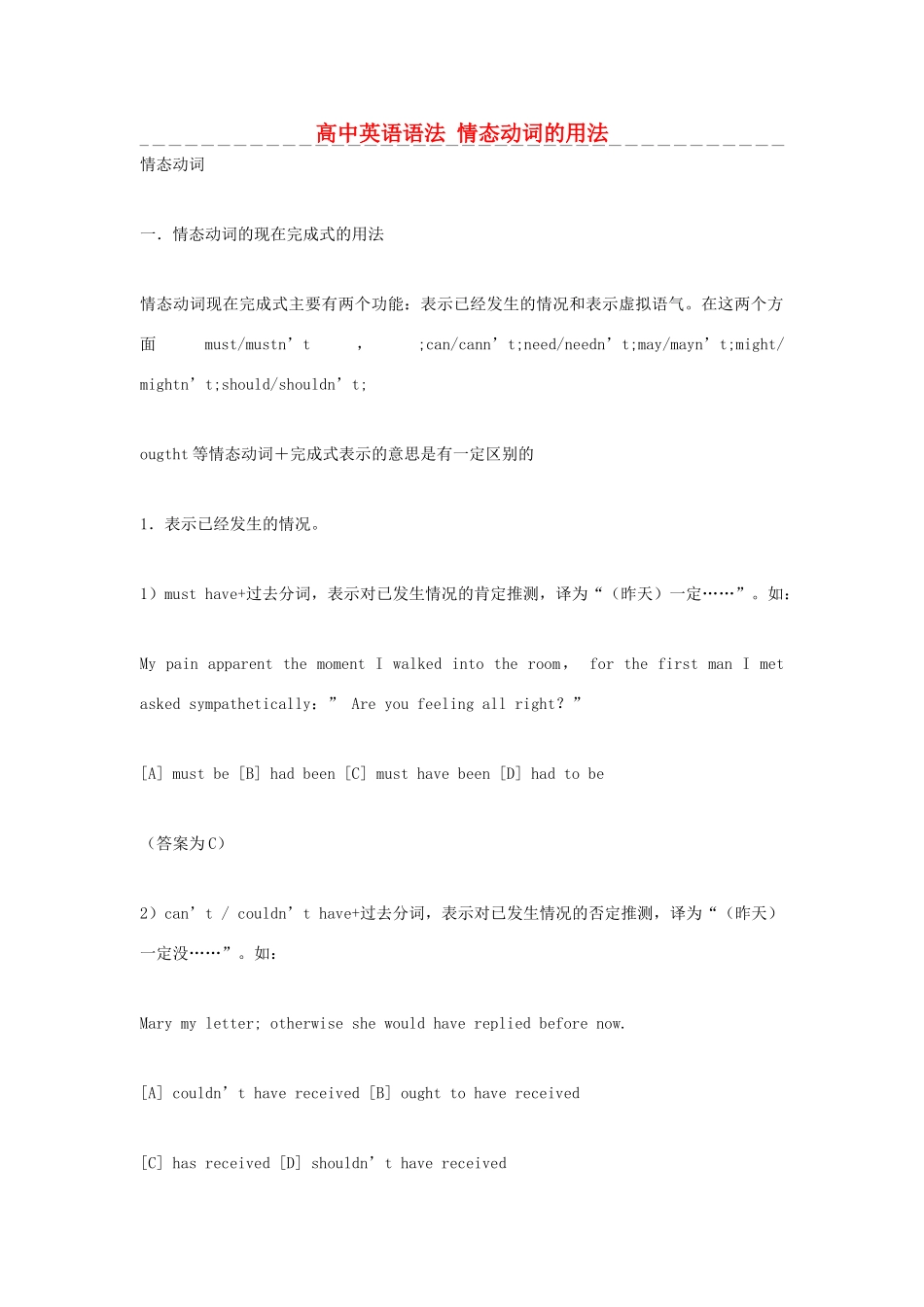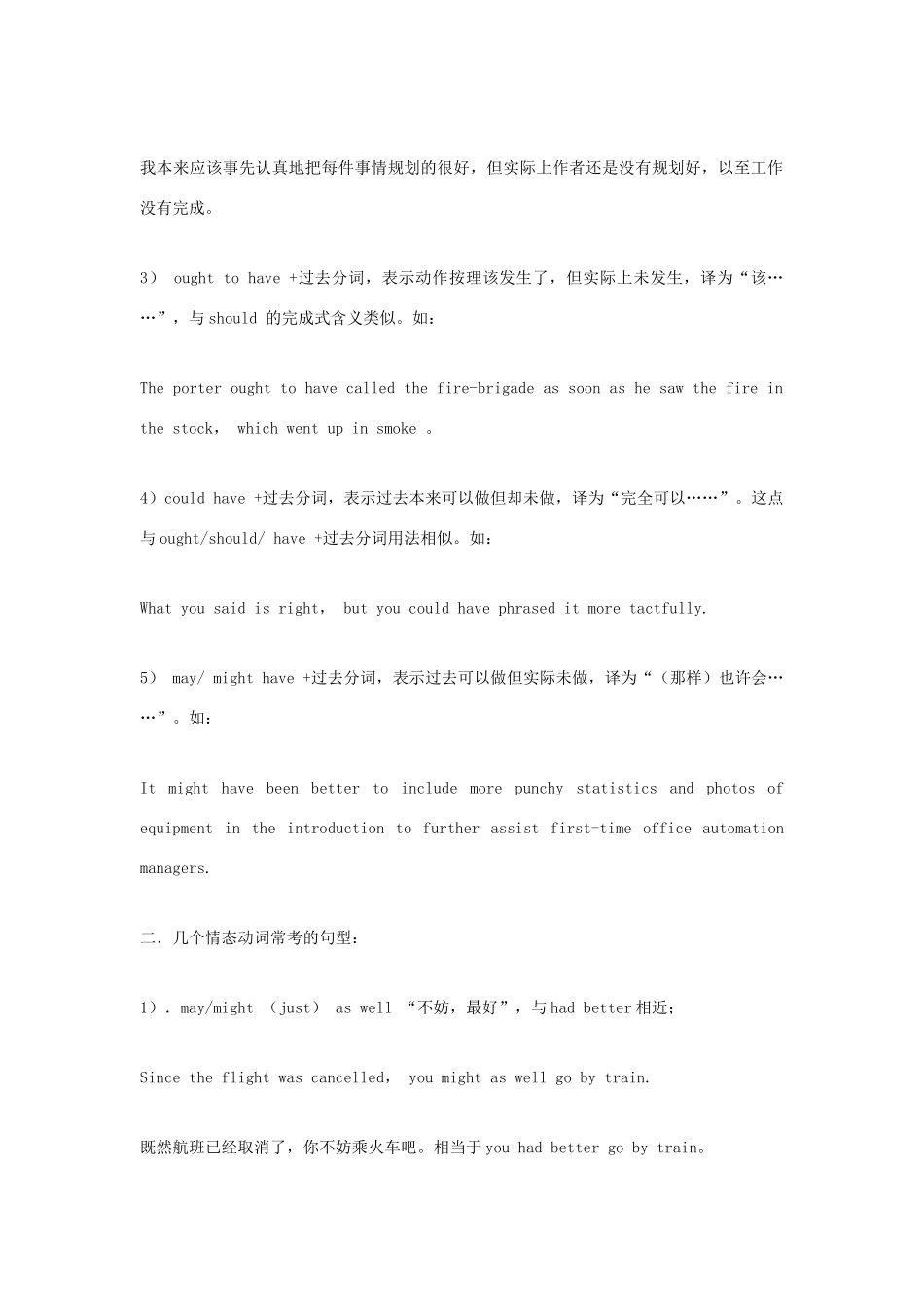高中英语语法 情态动词的用法情态动词一.情态动词的现在完成式的用法情态动词现在完成式主要有两个功能:表示已经发生的情况和表示虚拟语气。在这两个方面must/mustn’t,;can/cann’t;need/needn’t;may/mayn’t;might/mightn’t;should/shouldn’t;ougtht 等情态动词+完成式表示的意思是有一定区别的1.表示已经发生的情况。1)must have+过去分词,表示对已发生情况的肯定推测,译为“(昨天)一定……”。如:My pain apparent the moment I walked into the room, for the first man I met asked sympathetically:” Are you feeling all right?”[A] must be [B] had been [C] must have been [D] had to be(答案为 C)2)can’t / couldn’t have+过去分词,表示对已发生情况的否定推测,译为“(昨天)一定没……”。如:Mary my letter; otherwise she would have replied before now.[A] couldn’t have received [B] ought to have received[C] has received [D] shouldn’t have received(答案为 A)3)may / might have +过去分词,表示对已发生的事情做不肯定、可能性很小的推测,或事实上根本没发生,译为“也许……”。如:At Florida Power’s Crystal River plant , a potentially serious leakage of radioactive water may have been unknowingly caused by an electrician.2.表示虚拟语气。1) needn’t have + 过去分词,表示做了不必做的事,相当于” didn’t need to do”,译为“其实没必要……”。如:You needn’t have come over yourself.As it turned out to be a small house party, we so formally.[A] needn’t dress up [B]did not need have dressed up[C] did not need dress up [D] needn’t have dressed up(没有必要穿的那么正式,体现是说话者的建议,实际结果是否真的穿的很正式没有确定答案为 D)2)should have +过去分词,表示应该做某事但实际上未做,译为“本应该……”should not + have 过去分词表示本不应该做某事但实际上做了,译为“本不应该……”。如:I regret having left the work unfinished; I should have planned everything ahead carefully.我本来应该事先认真地把每件事情规划的很好,但实际上作者还是...


